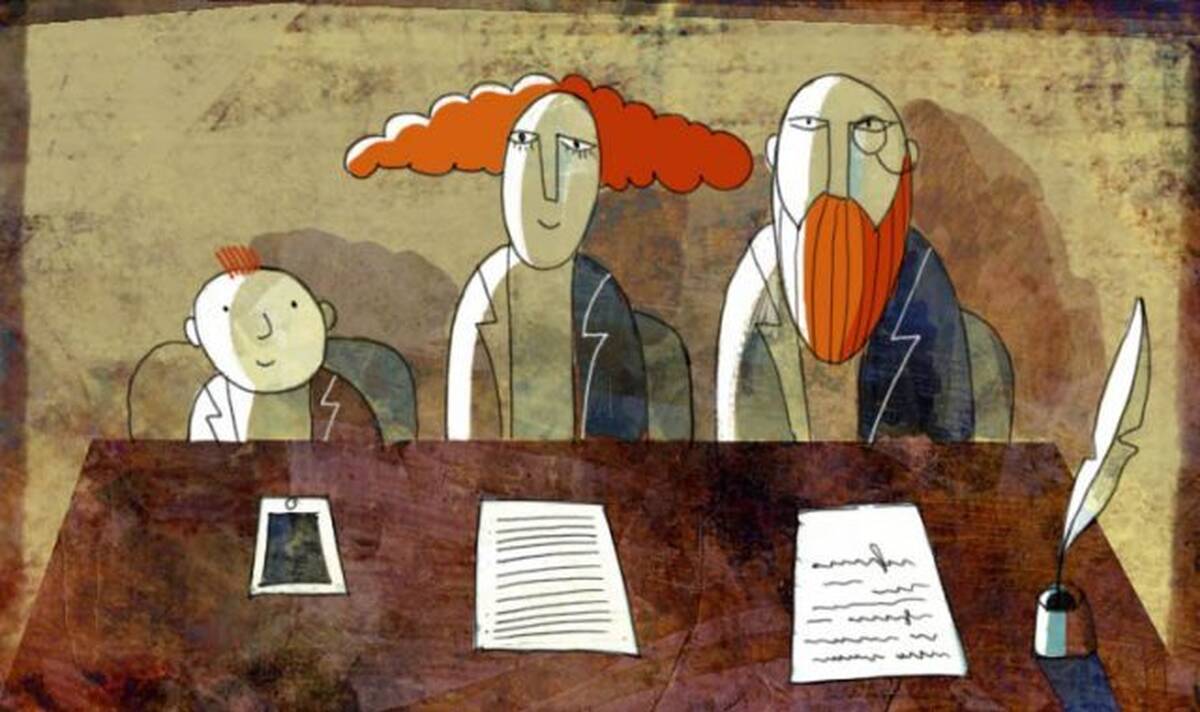Organizations Nov 1, 2021
Evolution Has Shaped How We Relate to Our Families. What Does This Mean for Family Businesses?
Gaining a better understanding of family conflict can help both family firms and the larger economy.

Yevgenia Nayberg
There has long been disagreement regarding whether family businesses have advantages over nonfamily businesses. While some have argued that family businesses have an edge over other types of businesses—from their financial performance to their environmental friendliness to the level of trust placed in them by customers—others have posited that family businesses face substantial challenges not faced by other firms, such as difficulty transitioning from one generation of owners to the next.
This disagreement is part of a broader debate regarding what distinguishes family and nonfamily businesses. One prominent theory holds that leaders of family businesses are simply driven by a set of motivations that are loftier than the bottom line.
“A common view among scholars is that family members in family businesses really care about each other, and they’re looking out for their long-term collective interests—both financial and nonfinancial,” says Krishnan Nair, a postdoctoral fellow with the John L. Ward Center for Family Enterprises at Kellogg. “This is said to have downstream consequences for, say, risk-taking and acquisition behavior, and helps explain the lower likelihood of engaging in aggressive tax avoidance or being a big polluter.”
In Nair’s mind, this explanation has always seemed partial, at best. After all, it’s also widely acknowledged that family businesses have high failure rates, especially as they attempt to transition from one generation of owners to the next. One of the key reasons for these failures, Nair says, is the pervasiveness of conflicts between family members—the exact opposite of the positive familial feelings and united commitment to their enterprise that many believe help these businesses.
“If family businesses are being plagued by conflict, this would have consequences beyond the performance of individual businesses.”
— Krishnan Nair
“I was curious what might explain the fact that, on the one hand, family businesses can be very harmonious and characterized by common interest,” Nair says, “but on the other hand, they can be very dysfunctional and plagued by conflict.”
Isolating these distinguishing factors could help predict which of these paths a family business is likely to take. And these family-business dynamics are important to understand, in no small part because of their prevalence in the global economy. In the U.S. alone, family businesses account for over 50 percent of GDP.
“This matters quite a lot because of how much of an influence these businesses have on the economy,” Nair says. “If family businesses are being plagued by conflict, this would have consequences beyond the performance of individual businesses.”
To better understand the likely differences in family dynamics within and across generations, along with the consequences of these dynamics for family-business outcomes, Nair teamed up with Edward Zajac, professor of Management and Organizations at Kellogg. In a new paper, they tackle the question in a novel way: by applying insights from the evolutionary sciences, a field that has long examined how the process of evolution has shaped human psychology and behavior.
“While it has been often observed that family businesses face particular intergenerational challenges, these challenges have typically been described in terms of cultural or personality differences,” Zajac explains. “There has been surprisingly little attention to the evolutionary factors that we believe can contribute to the explanation of these challenges.”
Connecting Evolutionary Science and Case Studies
Nair and Zajac studied how the factors surrounding family harmony and conflict tend to change over generations.
In the first generation, the main family relationships tend to be between the founder and their children. In the second generation, which the researchers call the sibling-partnership stage, relationships among siblings, their spouses, and their children take center stage. And in the third generation and beyond—the “cousin consortium”—the dominant relationships are among cousins, uncles and aunts, and grandparents.
“The family relationships that matter the most in terms of influencing the family business change from generation to generation,” Nair explains. “These prototypical family transitions mean that different insights are going to apply from the evolutionary space at different times.”
The researchers studied the evolutionary literature to glean the most applicable insights based on the primary relationships at each stage of the business. Based on this review, they drafted propositions that posit expectations for relational dynamics within family businesses. These broad predictions are meant to be empirically tested in later studies by researchers who have the data to do so.
The researchers then compared the findings from the evolutionary literature with case studies focused on family businesses to gauge the extent to which observed dynamics within businesses tended to align with insights from the evolutionary literature. They were heartened to see how often they did, in fact, align.
The propositions share two central premises: that humans tend to behave more altruistically toward the relatives with whom they share the greatest genetic overlap, and that we behave more altruistically with our maternal relatives than those on the paternal side.
These premises overlap in their logic. Evolutionary psychology holds that the mother–child relationship is the most altruistic one in humanity, given the certainty of extensive genetic overlap. It also suggests that the father–child relationship tends to be less altruistic, because there can be less certainty in the genetic overlap between fathers and their children. Similar uncertainty can also creep in when it comes to the genetic relatedness between siblings.
Based on these findings, the researchers propose that in the first generation of a firm, strong physical resemblance between the founder and their children, which increases expectations of genetic relatedness, tends to lead to greater family harmony, and that harmony is also bolstered when there is a matriarch involved who has influence over the patriarch.
In the second-generation sibling-partnership stage, the researchers similarly predict that greater physical resemblance between siblings is likely to accompany greater family harmony. They add that maternal half-siblings are likely to experience more harmonious business interactions than paternal half-siblings in a sibling partnership.
When it comes to third-generation cousin consortiums, Zajac and Nair predict that the greater the proportion is of those with maternal family ties relative to paternal family ties (such as maternal cousins versus paternal cousins) among those working together, the greater the family harmony is likely to be—though they acknowledge that this effect probably weakens in more patriarchal cultures.
Tendencies to Keep in Mind
Nair stresses that his propositions describe general tendencies and are not meant to be prescriptive or deterministic. Still, he believes it’s important that more family-business leaders develop an understanding of the patterns he highlights.
“If you’re a patriarch or a matriarch of a family business, you want to keep in mind the potential causes of conflict that can occur in the future,” he says. “This is important from the perspective of family-business owners who want their businesses to last for a long time.”
For example, he says that while most family businesses—even in highly egalitarian countries—are more likely to be passed down to male heirs, those that are handed down to female heirs may claim an evolutionary advantage, since it could mean that the children and cousins later conscripted into the business would feel closer and thus work together better. The researchers also underscore that even in businesses led by a patriarch, involvement of the matriarch remains important in maintaining familial and professional harmony.
Katie Gilbert is a freelance writer in Philadelphia.
Nair, Krishnan and Edward Zajac. 2021. “Family Harmony and Conflict in Family Business: An Evolutionary Perspective.” Working paper.



